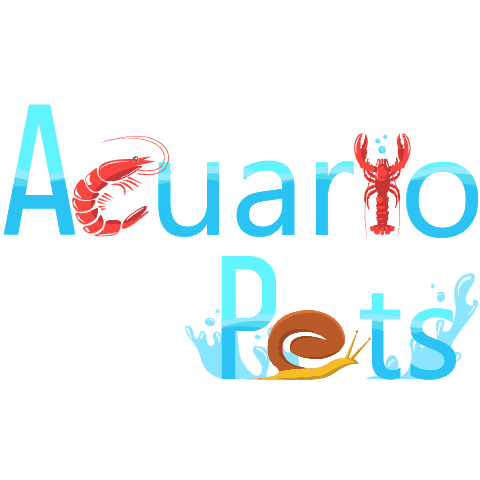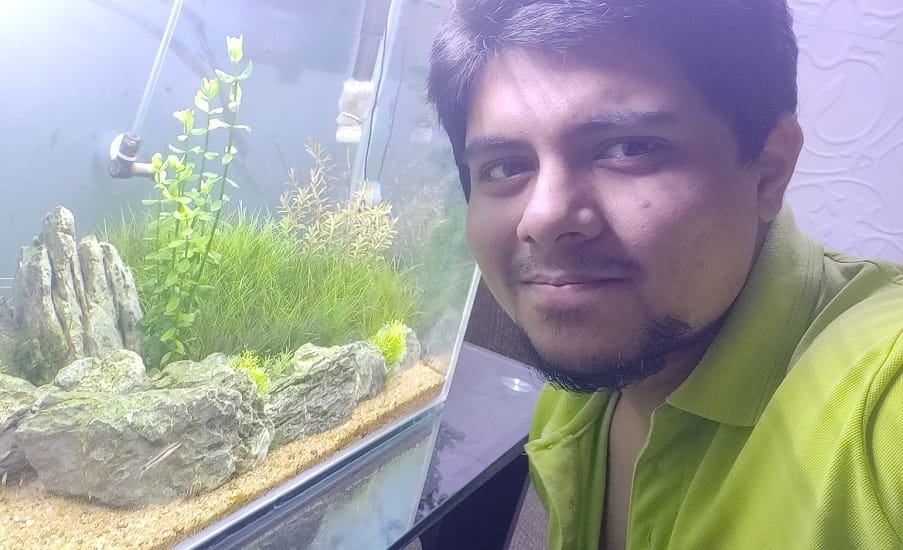This post was created with help from AI tools and carefully reviewed by a human (Muntaseer Rahman) . For more on how we use AI on this site, check out our Editorial Policy.
Check Out These FREE Tools We Made JUST For You!
Swim Bladder Disorder in Bettas: What Actually Works

Your betta’s doing the underwater version of a drunk walk.
Floating sideways. Sinking like a stone. Maybe doing the full upside-down fish float that makes you think he’s dead until he suddenly moves and scares you half to death.
Welcome to swim bladder disorder, the most stressful thing to watch since you accidentally started a grease fire in your kitchen.
What the Heck Is Swim Bladder Disorder Anyway?
First things first—swim bladder disorder isn’t actually a disease.
It’s more like a symptom of something else going wrong. Think of it like a runny nose during flu season—the nose isn’t the problem, the virus is.
The swim bladder itself? It’s basically a tiny balloon inside your betta that helps him control where he floats in the water.
When it works right, your fish can hover perfectly at any depth without swimming constantly like some kind of aquatic hamster on a wheel.
When it doesn’t work? Well, that’s when the circus begins.
How to Know Your Fish Has It
The Classic Signs
Your betta’s swimming like someone trying to walk in heels for the first time after three margaritas.
Here’s what to look for:
- Can’t stay upright – Swimming sideways or tilted like a capsized boat
- Stuck at the top – Floating at the surface and can’t swim down no matter how hard they try
- Pinned to the bottom – Laying on the gravel like they’ve given up on life
- The full flip – Swimming completely upside down (yes, really)
- Bloated belly – Looking like they ate Thanksgiving dinner three days in a row
- Curved spine – That weird S-shape that makes them look like a question mark
If your fish checks off any of these boxes, you’re probably dealing with swim bladder issues.
Why Does This Even Happen?
Overfeeding (The Number One Culprit)
Let’s talk about the elephant in the room, or should I say, the stuffed betta in the tank.
Your betta’s stomach is about the size of his eyeball.
Not his whole head. His literal eyeball.
And yet we’re out here feeding them like they’re training for a hot dog eating contest.
When bettas overeat, their stomach swells up and presses against the swim bladder. Boom—instant buoyancy problems.
Dry foods are especially bad because they expand in water. So those pellets? They’re basically tiny sponges that blow up inside your fish’s belly.
Cold Water Slowing Everything Down
Bettas need water between 78-82°F to digest food properly.
When the water’s too cold, their metabolism slows down like a sloth on sleeping pills. Food just sits there in their gut, causing a traffic jam that puts pressure on the swim bladder.
It’s like trying to digest Thanksgiving dinner in a walk-in freezer. Not gonna happen.
Bacterial or Parasitic Infections
Sometimes swim bladder disorder is a side effect of a bigger problem—bacterial infections or parasites.
If your fish also has clamped fins, is shaking, or looks discolored, you’re not dealing with simple constipation anymore.
Physical Injury
Did your betta get in a fight with a tankmate? Get stuck in the filter? Jump out during a water change?
Physical trauma can damage the swim bladder permanently.
Birth Defects
Some fish are just born with wonky swim bladders.
This is especially common in double-tailed bettas. If your fish has never swum normally since you got him as a baby, this might be why.
The good news? These fish can still live happy lives with some accommodations.
What Actually Works (And What Doesn’t)
Step 1: Stop Feeding Immediately
I know this sounds cruel, but wild bettas can go days without food.
Fast your fish for 1-3 days.
This gives their digestive system time to clear out and reduces pressure on the swim bladder.
Don’t panic—your betta won’t starve. I promise.
Step 2: Raise the Temperature
Gradually increase your tank temperature to 80°F (but don’t go higher than 82°F).
Warmer water speeds up their metabolism and helps them digest faster.
Think of it like putting your digestion into overdrive mode.
Step 3: Feed Daphnia (Not Peas)
Here’s where things get controversial.
Everyone and their grandma will tell you to feed your betta a pea. Blanched, skinned, cut into tiny pieces.
But here’s the truth: bettas are carnivores.
Peas work great for goldfish and guppies because they eat plants. But bettas need protein, and they actually have a harder time digesting vegetables.
The better option? Daphnia, brine shrimp, or bloodworms.
Daphnia especially acts as a natural laxative for carnivorous fish. It’s like their version of a pea—but actually designed for their digestive system.
If you absolutely can’t find daphnia and want to try a pea, go ahead. Some people say it helps. Just know it’s not the miracle cure everyone claims it is.
Step 4: Try an Epsom Salt Bath
Epsom salt (not aquarium salt—there’s a difference) works as a muscle relaxant and helps reduce internal swelling.
Here’s how to do it:
- Mix 1 tablespoon of Epsom salt per gallon of clean, dechlorinated water
- Make sure the water is the same temperature as your tank
- Place your betta in the bath for 10-15 minutes
- Watch him closely—if he seems super stressed, take him out early
- Return him to his regular tank (don’t dump the salt water in)
- You might need to repeat this 2-3 times over a few days.
Important: Don’t use regular aquarium salt or table salt. Epsom salt is magnesium sulfate, which is different and specifically helps with swelling.
Step 5: Set Up a Quarantine Tank
Move your betta to a smaller hospital tank if possible.
Keep the water level low—around 2-3 inches—so he doesn’t have to work as hard to reach the surface to breathe.
Add some floating plants or a betta hammock near the top so he has somewhere to rest.
No substrate in the hospital tank—you want to be able to see when he poops to know if the treatment’s working.
If It’s a Bacterial Infection
If fasting and Epsom salt baths don’t help after 3-4 days, you might be dealing with bacteria.
Look for these signs:
- Clamped fins (held close to the body)
- Lethargy beyond the swim bladder issues
- Discoloration or pale spots
In this case, you’ll need antibiotics like Kanaplex or API Erythromycin.
Remove any carbon filters from your tank before medicating—they’ll suck the medicine right out of the water.
If It’s Parasites
For parasitic infections, you’ll want an anti-parasitic medication like ParaCleanse.
This is only if you suspect parasites are the actual cause, not just constipation.
What Doesn’t Work (Stop Doing These)
Using Aquarium Salt for Bloating
Aquarium salt (sodium chloride) is different from Epsom salt.
It’s good for external parasites and injuries, but it won’t help with internal swelling. In fact, it can make things worse by retaining fluids.
Overusing Medications
Don’t just throw every medication you own into the tank hoping something works.
Products like Bettafix and Melafix are generally weak and not worth the money for serious conditions.
Ignoring Water Quality
All the Epsom salt in the world won’t help if your water is full of ammonia and nitrites.
Test your water parameters. Do regular water changes. Keep things clean.
How Long Until They Get Better?
If it’s simple constipation? You should see improvement within 2-4 days.
Sometimes bettas start swimming normally again after just one good poop.
If it’s bacterial or parasitic? Could take a week or two of treatment.
If it’s a birth defect or permanent injury? They won’t “get better,” but you can make their life comfortable with modifications.
Living with a Permanently Wonky Fish
Some bettas never fully recover if their swim bladder is permanently damaged.
The good news? This isn’t fatal or painful.
You can set up their environment to help them thrive:
- Use a wide, shallow tank instead of a tall one
- Keep water levels low so they can easily reach the surface
- Add lots of resting spots—floating plants, betta hammocks, broad-leafed plants
- Feed floating food so they don’t have to chase it to the bottom
These fish can live totally normal lifespans. They just need a little extra help.
How to Prevent This Nightmare
Don’t Overfeed
Seriously. This is the big one.
Feed 3-5 pellets once or twice a day, max. That’s it.
If you’re paranoid about pellets expanding, soak them in tank water for a few minutes before feeding.
Fast Your Fish Regularly
Skip feeding one day a week to give their digestive system a break.
Vary Their Diet
Don’t just feed pellets every single day.
Mix in frozen or live daphnia, brine shrimp, and bloodworms. This keeps their gut healthy and provides natural fiber.
Keep Water Temperature Stable
Get a heater and keep the tank at 78-80°F consistently.
Sudden temperature changes stress fish out and slow their digestion.
Maintain Good Water Quality
Test your water regularly. Do weekly water changes. Keep ammonia and nitrites at zero.
Good water quality prevents bacterial infections that can lead to swim bladder issues.
The Bottom Line
Swim bladder disorder looks terrifying, but it’s usually fixable if you catch it early.
The treatment boils down to: stop feeding, raise temperature, give Epsom salt baths, then feed daphnia.
If that doesn’t work, you’re probably dealing with bacteria or parasites and need medication.
Most bettas with swim bladder disorder recover completely within a few days. The ones that don’t can still live happy lives with some simple tank modifications.
Just remember—your betta’s stomach is the size of his eyeball. Feed accordingly, and you’ll avoid most swim bladder drama entirely.
Now go save your sideways fish.
About Author
Hello, I’m Muntaseer Rahman, the owner of AcuarioPets.com. I’m passionate about aquarium pets like shrimps, snails, crabs, and crayfish. I’ve created this website to share my expertise and help you provide better care for these amazing pets.
Disclaimer
This site is owned and operated by Muntaseer Rahman. AcuarioPets.com is a participant in the Amazon Services LLC Associates Program, an affiliate advertising program designed to provide a means for sites to earn advertising fees by advertising and linking to Amazon.com. This site also participates in other affiliate programs and is compensated for referring traffic and business to these companies.

